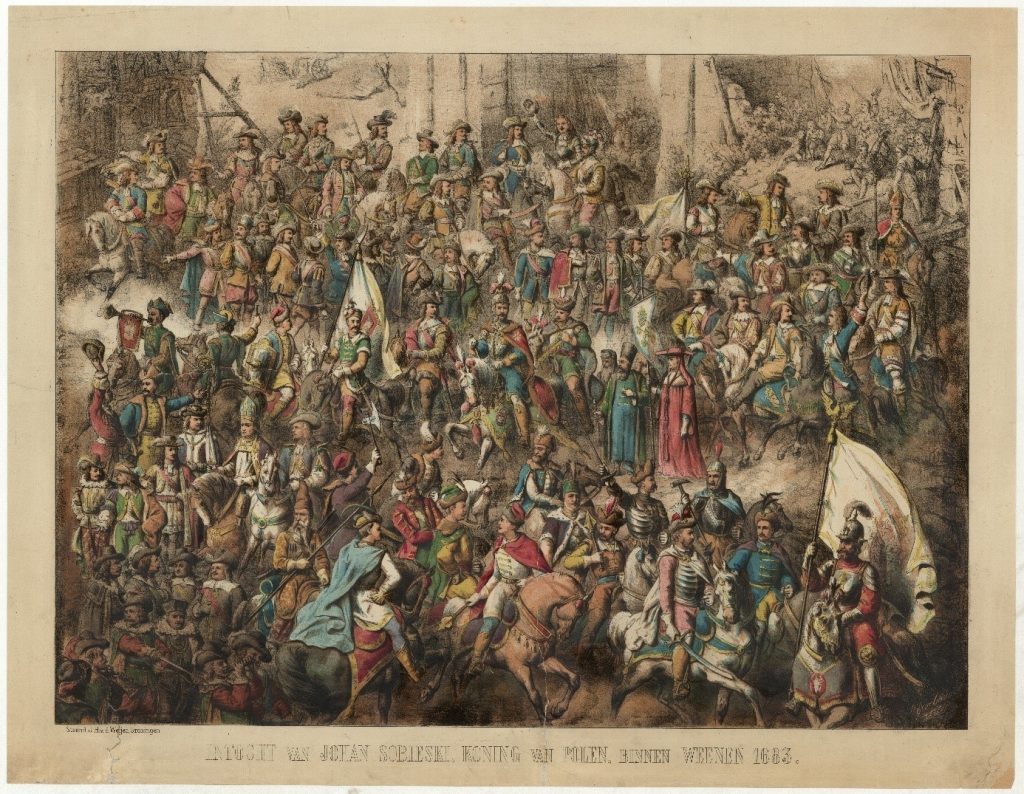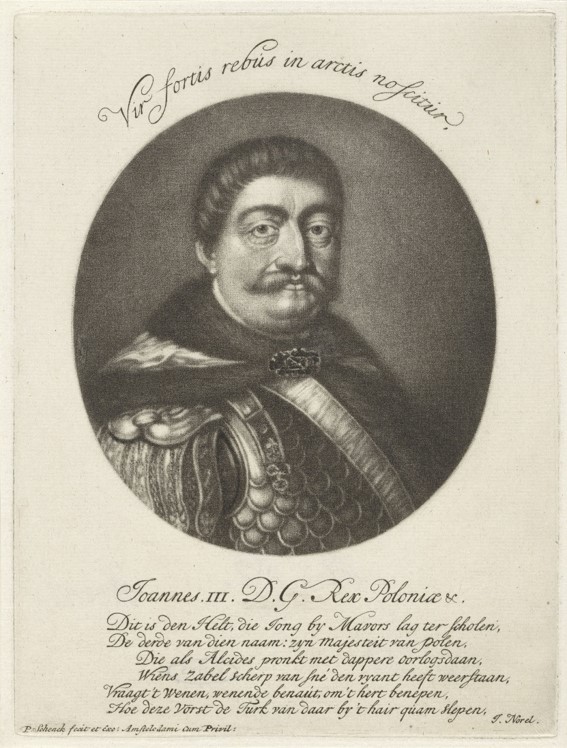 On this day in 1869, the city of Groningen witnessed a wondrous spectacle: the re-enactment of the entrance of King Jan III Sobieski of Poland into Vienna, in September 1683. At 7 pm, a masquerade of over seventy lavishly clad Dutch students began its passage through the city center, both on foot and on horseback. Such student masquerades were a common phenomenon in the nineteenth-century Netherlands, and they often portrayed specific historical events. An accompanying booklet enthusiastically relates Sobieski’s victory over the Turks at the Battle of Vienna, on 12 September 1683, and it also lists the masquerade’s participants, the roles they played, and the route they took through Groningen. Moreover, the booklet contains a small print based on a larger, colored illustration by the local artist Otto Eerelman. It depicts the masquerade as a long string of men in historical costumes of Polish and Austrian or German soldiers and clergymen, many wielding sabers, war hammers, lances, and flags. At the center of the print stands the masquerade’s main figure: Sobieski. Naturally, the print gives a fictional impression of the event, but one can imagine the excitement the masquerade must have caused in Groningen, which for one evening in 1869 played the role of Vienna welcoming Jan III Sobieski in 1683.
On this day in 1869, the city of Groningen witnessed a wondrous spectacle: the re-enactment of the entrance of King Jan III Sobieski of Poland into Vienna, in September 1683. At 7 pm, a masquerade of over seventy lavishly clad Dutch students began its passage through the city center, both on foot and on horseback. Such student masquerades were a common phenomenon in the nineteenth-century Netherlands, and they often portrayed specific historical events. An accompanying booklet enthusiastically relates Sobieski’s victory over the Turks at the Battle of Vienna, on 12 September 1683, and it also lists the masquerade’s participants, the roles they played, and the route they took through Groningen. Moreover, the booklet contains a small print based on a larger, colored illustration by the local artist Otto Eerelman. It depicts the masquerade as a long string of men in historical costumes of Polish and Austrian or German soldiers and clergymen, many wielding sabers, war hammers, lances, and flags. At the center of the print stands the masquerade’s main figure: Sobieski. Naturally, the print gives a fictional impression of the event, but one can imagine the excitement the masquerade must have caused in Groningen, which for one evening in 1869 played the role of Vienna welcoming Jan III Sobieski in 1683.
*I originally wrote this post for the social media outlets of the Dutch Embassy in Poland. This was post no. 38.
 On 12 September 1683, King Jan III Sobieski of Poland achieved a decisive victory at the Battle of Vienna. In July that year, Turkish forces had laid siege to the imperial city as part of a campaign designed to strengthen the Ottoman Empire’s influence in Europe. Emperor Leopold I allied himself with Sobieski, who rode to Vienna’s aid and took command of the city’s relief. After the final battle took place, the Turks were routed and forced to retreat, eventually losing their foothold in Hungary and Transylvania.
On 12 September 1683, King Jan III Sobieski of Poland achieved a decisive victory at the Battle of Vienna. In July that year, Turkish forces had laid siege to the imperial city as part of a campaign designed to strengthen the Ottoman Empire’s influence in Europe. Emperor Leopold I allied himself with Sobieski, who rode to Vienna’s aid and took command of the city’s relief. After the final battle took place, the Turks were routed and forced to retreat, eventually losing their foothold in Hungary and Transylvania.